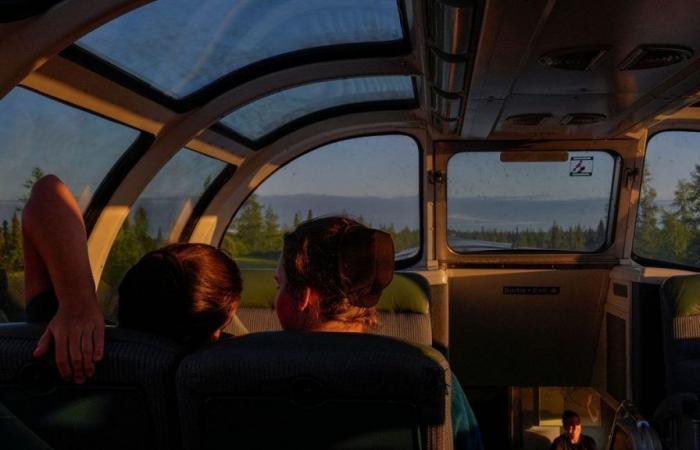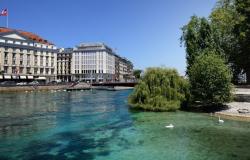This train journey takes you straight to the polar bear capital of the world.
ADVERTISEMENT
It is at a peaceful pace that the countryside of the far north of Canada passes by, seen through the windows of a wagon specially dedicated to the observation of this grandiose panorama.
No wifi to disturb these images which seem to follow one another to infinity, mixing green and brown tones, in a long contemplative journey. Two or three hours pass without us noticing.
To get from Churchill (Manitoba, Canada) – world capital ofpolar bear and beluga and a mecca for northern adventure tourism – in Winnipeg (Manitoba), there are only two possibilities.
The first is to take a flight, a one-way ticket costing $1,100 (734 euros) for two and a half hours. The second is to opt for the train station and jump into a train panoramic, provided you have 45 to 49 hours ahead of you, for 200 dollars (133 euros). This is a journey unlike any other, described by the Canadian railway company VIA as a true “adventure”.
The journey begins with a foray into the middle of the treeless, but not entirely barren, tundra, then for hours facing the forests. These finally give way to fields, with some animalsthe lucky ones being able to see a herd of elk.
When night comes, the hope of catching a glimpse of aurora borealis wins travelers.
The journey stretches 1,697 kilometers, with ten stops along the way, some lasting just a few minutes, others lasting a few hours.
The link between Churchill and the rest of the world
Although this route is an attraction for many tourists, this line remains, for those who live there year-round, an essential link between Churchill and the rest of the world, due to the lack of roads leading to other cities.
It is therefore necessary take the plane– the price of which is high – or travel by night train, at a more reasonable price.
THE trains biweekly trains transport tourists, residents, mail, food, fuel or basic necessities.
From May 2017 to October 2018, part of the railway line was devastated by stormsa phenomenon to which was added the lack of maintenance of infrastructure, blocking the entire population.
Basic necessities had to be delivered by plane and propane was transported by ship across Hudson Bay. Prices in town skyrocketed, and lawsuits were filed to determine who was responsible for the repair costs.
“We didn’t have rail service for about 18 months, which meant Churchill residents couldn’t visit family in other parts of Manitoba,” Churchill Mayor Mike Spence said.
The city and some indigenous populations in the region have taken over the railway line, which is operational again. According to Mike Spence, with tens of millions of dollars invested by the community in repairs, the lines should remain open, even as weather conditions become more and more extreme.
What does this Canadian train look like?
Of the berths are available on board the train, as well as shower cabins, but for those traveling cheaper or booking late, there are standard reclining cabin seats. But they don’t allow you to lie down completely.
Food is also limited.
There is a small kitchen, where you can heat up a few dishes in the microwave and find some beer. But regulars know that they can bring their own snacks, and enjoy restaurants during longer stops in towns along the route.
The stations each have their own personality: in Dauphin, passengers wait in front of a historic brick station built in 1912, while in Wabowden, a simple yellow sign nailed near the tracks signals the stop to passengers.
For residents of small communities along the line, the train is the only link to other parts of Manitoba.
In Thompson, passengers are better off
Many people take the train to and from Thompson every week. With nearly 13,600 inhabitants, it is the largest community where the train stops, apart from Winnipeg, which offers services or businesses such as supermarkets and restaurants.
Thompson, halfway between Churchill and Winnipeg, is where the journey ends for many Churchill residents.
Indigenous communities line the route
After leaving Thompson, the train heads towards communities indigenous remote, located on either side of the route.
Although the journey is short, it lasts for hours in trainand many passengers kill time by playing cards, or chatting in the dining car.
In Thicket Portage, which has a population of nearly 150, residents unload luggage and other goods, food, diapers and other necessities.
The train also ventured into another area of eastern Saskatchewan and into the pretty town center of Canora, which strangely was not on the list of stops.
As the train heads south, the landscape changes, with the northern forest giving way to fields and livestock no longer visible as it approaches Winnipeg in southern Manitoba.
Finally, after 49 hours of travel, the train arrives at Winnipeg station.






